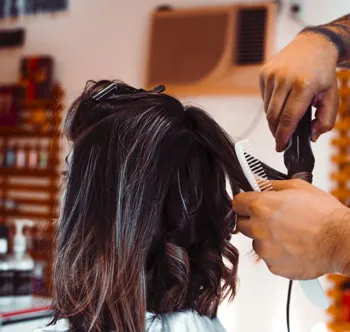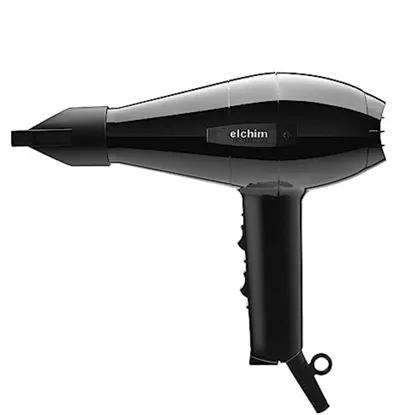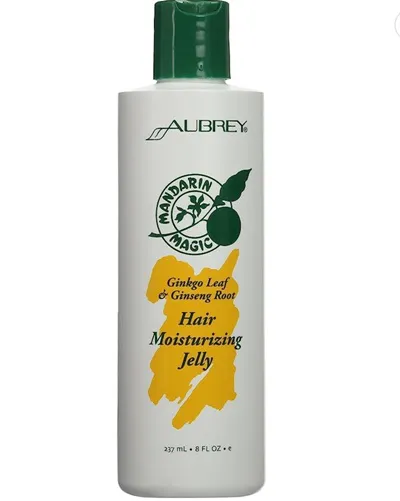Hi Bridget,
Welcome to our site. I moved your question here because it really involves a variety of topics and needs to be explained in full (the thread you posted on was more addressing shrinks v. tubing specifically). OK, now, your question was this:
"Are shrinkies the tubes that hold the extensions?I'm new to eurolocs and hairlocs, can anyone please tell me the difference? There's so many options for extensions, I'm starting to get confused! I've had a sew in & a glue in before, and now I'm looking for a more long term fix. Any info is great, thanks so much!"OK, let's start at the very beginning. Extensions are very confusing. There are many of us here who have been doing this for awhile, and we still don't know what certain methods and techniques are called, but hopefully this will serve as a good overview. (I'm leaving out many details here for the sake of space, so ask as many follow-up questions as necessary.)
Extensions can be defined as the process of adding hair to your existing hair to create length and/or volume. They can be either synthetic (manmade) or human hair (hair that is imported, primarily from Asia, and usually chemically treated to match different hair types). Synthetic hair is generally categorized by its quality, the highest quality being monofibre (monofilment, such as Dome, Prostyles, PlastikHaar, Trimco, etc.). Human hair categorization is more complex, so I wont delve into it here, except to say that some of the terms used to describe the different grades are Remy, Remi, virgin, single-drawn, double-drawn, "European," Indian, temple, Asian, cuticle, non-cuticle, and so forth.
Extensions can also be divided into clip-ins (hair that comes on toupee clips or similar attachments that are clipped into the roots of your own hair and taken out at night) or permanent (not, in fact, permanent at all, but will last in your hair for a few weeks up to three or four months and cannot be removed at night). No extensions will last longer than three or four months, because (if for no other reason), when your hair grows, the extensions will be farther away from the scalp/roots, and will need to be moved back up.
Beyond that, when it comes to "permanent" extensions, there is a distinction between strand-by-stand (also known as individuals or interlocking), which means that a "strand" (actually a few hundred strands) of extensions hair is adjoined to small sections of your own hair, or wefts (in which hair is sewn on to a long strip of material resembling a grass skirt or curtain). There are other basic distinctions, such as braids, dreads, and loose extensions. These boards deal primarily in loose (free-flowing) extensions, so the following will apply to that type only. (If you're interested in dreads, braids, wool, or other alternative styles, Quinnster's is the best online source of information; you'll find the link below.)
Wefts can basically be attached to the hair via weaving, bonding, or microlinks. Strand-by-strand extensions can be attached in myriad ways, including various forms of weaving; pinchbraiding (also known as HairPolice method); Micro-Illusions, or Micro-Point Illusions; fusion (with glue, glue sticks, and glue guns, or prebonded hair--some fusion brand names include Great Lengths, Monkey Barz, Balmain, Cinderella, and so forth). There is also the dome heat-sealing method, which can only be used with synthetic hair; it uses boxbraiding and a heat clamp to seal synthetic hair in on itself (this is quite complex to do, and usually requires two people to install).
Beyond that, there are loc-ing/linking methods (including microrings, extendtubes, and microlinks, which are available for home use, as well as Eurolocs and Hairlocs, which are done by those companies' "certified" extensionists); these are metal tubes (usually aluminum, nickel, or copper) that are clamped down on pretipped strands with your own hair to keep them in place. And finally, there are shrinkies (also known as Shrink Links, which is the branded slaon version, and some people also use dual-wall shrink tubing for this); they are clear tubes that, when heated with a clamp/wand, "shrink" around pretipped extensions strands with your own hair to keep them in place.
As I mentioned before, there are products that fall into all of these categories that are available for DIY, or at-home, use, and others that are only available to licensed stylists. Professionals, of course, can also use the DIY methods, but not the other way around. The branded methods are generally much more expensive. All of the salon versions are capitalized above; the DIY versions are lowercased.
Now, you specifically wanted to know the difference between Hairlocs and Eurolocs. Both are quite similar, really--they are both loc/loc-ing strand-by-strand methods that cost anywhere between $1000 and $3000 for a full or 3/4 head. Hairlocs have traditionally used a copper clamp (although it may not be copper now), but I think Eurolocs use a different type of metal. On the plus side, these are fairly undectable and the installation and removal is fairly quick and painless. On the negative side, they are quite expensive, prone to slipping, and reported to cause a lot of damage (read the previous threads on these topics for more info). The generic DIY equivalents, known as extendtubes, microrings, or microlinks, have received better reviews and are fairly inexpensive and easy to install. Kristin provided a tutorial here, which shows how the process works step-by-step:
http://talk.hairboutique.com/forum/viewthread.asp?forum=AMB_AP934431446&id=2062As far as shrinkies go, I explained them to some extent above, but they are a relatively new method (at least for at-home use) and are receiving pretty good reviews. They are arguably the most undetectable DIY method, and Amm has posted a lot of info about them on this site. You can find a demo on Doc Locks, here:
http://www.drlocks.net/shrinkies_demo.htmSome other sites that may be useful are Quinnster's Loose overview:
http://www.quinnster.pwp.blueyonder.co.uk/And the Hair Extensions Forum:
http://p080.ezboard.com/bhair18356Just read through the information, and take your time. Different people have different results with various methods, but doing a lot of research will help you find the best method for you.
Good luck!
 Forum Home
Forum Home



































